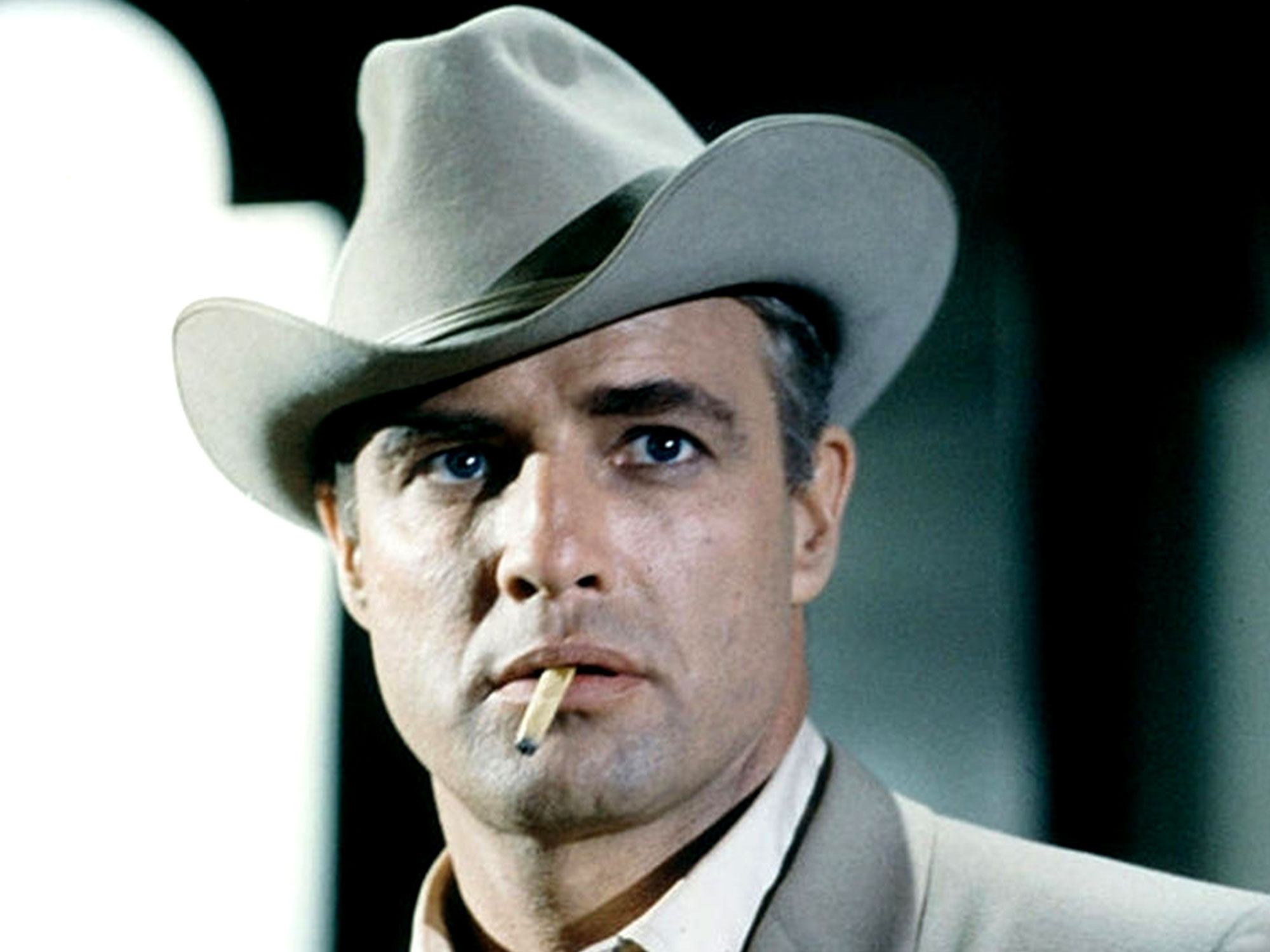How The Chase set the topical, visceral tone for New Hollywood

How The Chase set the topical, visceral tone for New Hollywood
In 1967, Bonnie and Clyde lit the fuse for a Hollywood revolution, confounding the critical establishment, attracting droves of wide-eyed audiences who’d never seen anything like it, and altering the course of American cinema forever. The furore around the film was so intense, it more or less wiped director Arthur Penn’s previous film from the public consciousness. But for all the adjectives that could be used to describe 1966’s The Chase, ‘forgettable’ is not one of them.
Bubber Reeves (Robert Redford), a wrongfully imprisoned convict, is tempted into a jail break by a fellow prisoner. After their escape, that prisoner kills a person and drives away in their car, leaving Bubber to take the fall and making him a fugitive twice over. The citizens of his unnamed Texas hometown, with only a few exceptions, are a rowdy, drunken mob who bay for his blood; after hopping the wrong train, Bubber finds himself heading straight for them. His only hope for protection is the long-suffering Sheriff Calder (Marlon Brando), who never believed he was guilty in the first place.
The Chase is a big film, running at more than two hours and boasting a big-hitting cast. Beyond Brando and Redford, it stars Miriam Hopkins as Bubber’s despairing mother, Jane Fonda as his anxious wife (the first of four features Fonda and Redford would star in together over the next 40 years), EG Marshall as the town’s obscenely wealthy overlord, and Robert Duvall as his most obsequious employee.
It was released in the middle of a tumultuous decade, and Lillian Hellman’s screenplay (adapted from Horton Foote’s novel and play of the same name) pes headfirst into a phalanx of hot-button social issues – racism, wealth disparity, the sexual revolution, guns – often using the supporting cast as a kind of Greek chorus.
It’s melodramatic, overblown, sometimes downright hysterical. And yet that hysteria, though mocked in many contemporary reviews, which gives The Chase its queasy power. The townsfolk are portrayed rather like a caricature. Fiendish, almost zombie-like; you can’t reason with them, and they move in a big, homogenous pack. As the film progresses, their soullessness starts to feel nightmarish.
Trapped in this nightmare is Sheriff Calder, who in another actor’s hands could have been a tedious archetype, a grey wall of goodness facing off against a town of hedonistic villains. Brando, however, makes him a captivating presence. He’s never self-righteous. He doesn’t hide his disdain at the citizens under his jurisdiction, or try to show them the error of their ways. He knows they are way beyond that. A palpable sense of exhaustion radiates off of Brando, just as potent as the character’s fundamental decency.
<
blockquote>“The passage of time hasn’t dimmed the brilliant power of Brando’s performance, or the film’s seething atmosphere.”
Related News & Content
-

Use wp.media templates to create totally custom modal
Use wp.media templates to create totally custom modal,Following up on this answer I'm trying to determine how to create a modal with completely unique menu items/content than the media modal. If you add a new state you can add a new menu tab and hav... Tags: media modal stackexchange.com WordPress Development Stack Exchange -

Get post by tag
Get post by tag,I want to get several post by tag. So I try to use get_posts() function: <?php $args = array( 'numberposts' => '3', 'post_status' => 'publish', 'tag' => 'travel' ); $ Tags: functions posts query posts stackexchange.com WordPress Development Stack Exchange -

Elementor + ACF: How to insert dynamic JSON-LD formatted code into ACF field without sanitizing the script tag?
Elementor + ACF: How to insert dynamic JSON-LD formatted code into ACF field without sanitizing the script tag?,On a normal website, I am able to add JSON-LD structured data, such as below, into a Elementor HTML widget, in a proper way. However, as soon as I insert JSON-LD format into an ACF field (Textarea)... Tags: advanced custom fields php stackexchange.com WordPress Development Stack Exchange -

Gutenberg InnerBlocks noallowedblocks on parent but allowedblock on Child
Gutenberg InnerBlocks noallowedblocks on parent but allowedblock on Child,This is a continuation of the following post: Custom Gutenberg block with nested InnerBlocks renderAppender not displaying add button I solved one problem but created a different problem. I'm recr... Tags: block editor plugin development stackexchange.com WordPress Development Stack Exchange -

Delay Issue: Using Wget with JSON Endpoint – Need Help Understanding Headers
Delay Issue: Using Wget with JSON Endpoint – Need Help Understanding Headers,On a WooCommerce website, I have a REST endpoint created with register_rest_route that returns a JSON response. To perform a routine with a certain frequency and urgency, I have added this instruct... Tags: rest api stackexchange.com WordPress Development Stack Exchange -

How do I change top header background color
How do I change top header background color,Please refer to website: https://virginiafrank.com I cannot get the top header background color (or phone numbers) to change color. I would prefer the background gold and text black. I can't make t... Tags: headers stackexchange.com WordPress Development Stack Exchange -

How to display the_tags() as plain text
How to display the_tags() as plain text,the_tags by default is displaying as URL. I need to display it as plain text to insert inside HTML attribute. <?php $tag = the_tags(''); ?> <div class="image-portfolio" data-section... Tags: stackexchange.com tags WordPress Development Stack Exchange -

Give to site admin the option to "skip confirmation email" when adding new user
Give to site admin the option to "skip confirmation email" when adding new user,in wordpress multisite when we give to site admin the option to add new users, site admin dont have the "checkbox" to add the new user without sending the user email with link activation (see the Tags: email verification multisite stackexchange.com users WordPress Development Stack Exchange -
Facing Hamas and Tehran, Israel is left with only vengeful madness | Opinion
Facing Hamas and Tehran, Israel is left with only vengeful madness | Opinion,Despite the Terrible Disaster on October 7, and the Failures It Exposed, Israel Is Still Convinced That the Image of the Mad Man Will Ensure Its Security -

Carol Kirkwood stuns in figure-hugging dress amid BBC Breakfast technical chaos
Carol Kirkwood stuns in figure-hugging dress amid BBC Breakfast technical chaos,CAROL Kirkwood stunned in a figure-hugging dress amid a technical blunder. BBC Breakfast was flung into chaos this morning after a string of sound issues. However Carol, 61, was all smiles as she p… Tags: BBC BBC Breakfast BBC ONE Carol Kirkwood mirror.co.uk The Scottish Sun TV News TV UK daytime TV -

Families ‘to sue prison’ where loud inmates ‘terrorise kids’ with screaming
Families 'to sue prison' where loud inmates 'terrorise kids' with screaming,Residents living next door to a new prison who say their kids have to sleep wearing headphones and some leave during weekends due to the racket are threatening to sue the prison service Tags: mirror.co.uk Neighbours from hell prisons Scottish government The Mirror -

Doctor Strange’s Secret Wars Role May Be More Important Than You Thought – Looper
Doctor Strange's Secret Wars Role May Be More Important Than You Thought - Looper,According to entertainment leaker Alex Perez, Doctor Strange will find himself confronting his inner struggles as he headlines "Avengers: Secret Wars." Tags: Fiction Looper looper.com Marvel Cinematic Universe Science Star Wars The Universal Monsters franchise -

‘It’s too revealing for a wedding’ people say as guest shares her dress with cut-outs & plunging neckline
‘It’s too revealing for a wedding’ people say as guest shares her dress with cut-outs & plunging neckline,A WOMAN has been mocked after sharing the summer dress she was considering wearing to nuptials. Attending someone’s big day can be just as stressful as organising the wedding ceremony –… Tags: Body Shapes events and attractions personal celebrations and life events style and fashion The Sun the-sun.com wedding Wedding Dresses Weddings womens clothing womens fashion -

Carl Weathers dead at 76: Rocky and Happy Gilmore actor mourned by family after dying ‘peacefully in his sleep’
Carl Weathers dead at 76: Rocky and Happy Gilmore actor mourned by family after dying ‘peacefully in his sleep’,ACTOR Carl Weathers has died at 76. Weathers, whose career spanned film and television, action and comedy, is best known for his role as Apollo Creed in the Rocky franchise, as well as his performa… Tags: Celebrity Celebrity Deaths cinemas and events comedy tv events and attractions Movies Pop Culture Showbiz Television The Sun the-sun.com -

‘What Jennifer Did’: Netflix doc explores shocking Ont. murder-for-hire case
'What Jennifer Did': Netflix doc explores shocking Ont. murder-for-hire case,Most of Jennifer Pan's entire life was made up of lies. When her parents began to catch on, she decided to bring in hired hitmen. Tags: Crime Entertainment Global News globalnews.ca Jennifer Pan jennifer pan now Trending What jennifer did what jennifer did netflix -

What’s behind the lack of enthusiasm for this year’s music festivals?
What's behind the lack of enthusiasm for this year's music festivals?,The public sentiment about this year's crop of music festivals is an overwhelming "meh." There are good reasons for this. Tags: Coachella Entertainment glastonbury Global News globalnews.ca lollapalooza Music festivals News -

Husson nursing program celebrating 40 years of educating tomorrow’s health professionals
Husson nursing program celebrating 40 years of educating tomorrow’s health professionals,Nursing tea celebration planned to mark occasion BANGOR — Husson University’s School of Nursing is celebrating its 40th year of educating future Tags: Bangor Daily News bangordailynews.com Piano -

‘Seeds of Change’ to air on Maine Public Television
‘Seeds of Change’ to air on Maine Public Television,Maximilian Armstrong of One Wing Pictures announces that “Seeds of Change: Breaking Free from the Prison Food Machine” will appear on Maine Public Tags: Bangor Daily News bangordailynews.com Piano
Warning: file_get_contents(https://www.scienceradars.com/wp-output-content.php?pg=1&cat=&kw=&lvl=): Failed to open stream: HTTP request failed! HTTP/1.1 526 in /home/wwwroot/xuenou.com/wp-content/themes/chromenews/template-parts/content.php on line 169
Warning: file_get_contents(https://www.bayuexiang.com/wp-output-content.php?pg=1&cat=&kw=&lvl=): Failed to open stream: HTTP request failed! HTTP/1.1 526 in /home/wwwroot/xuenou.com/wp-content/themes/chromenews/template-parts/content.php on line 173
TrendRadars
The Most Interesting Articles, Mysteries and Discoveries

































































